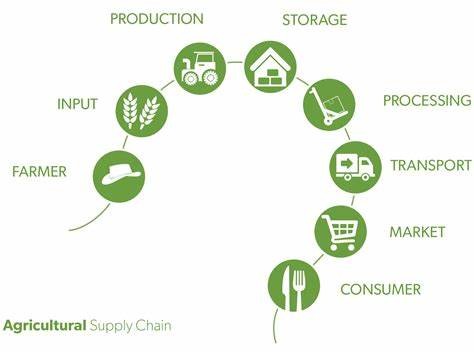Last time we had such turmoil was after the Qingdao fraud cases but it seems that this time overall losses will be greater perhaps in the region of USD 1 billion to 2 billion.
There are already “voices of alarm” claiming, the end of commodity trade finance, with management and risk departments furiously calculating exposure to the sector and capital at risk.
Below I will try to offer my perspective on a few aspects and why I believe this is not the end of commodity trade finance, in fact, it may not be as bad as originally thought!
- The long term
Different banks have had different approaches towards the sector. The better ones took a holistic view developing dedicated risk models, dedicated risk management departments, specialised front office commodity trading desks and dedicated transaction and collateral monitoring systems. Some even took the view that occasional losses are part of the cost of being in such business. Others have taken a more opportunistic approach, believing they can easily replicate the success of established leaders and banking on the frequently mentioned trade finance gap (note: as per figures published by Asian Development Bank the global trade finance gap is app USD 1.5 trillion). The transactional finance approach (whereby a bank lends against individual transaction commodity assets or related receivables) seemed a no brainer: desktop due diligence and as long as there are (often copy) transactional documents all will be fine. With often the norm being limited understanding of pricing, hedging and trading positions and typically no risk audits. On top the joy of getting somewhat higher margins from all the mid-size traders.
When an accident happens those without seatbelts tend to suffer more and some may never drive again. It is the same with banks, the better protected ones will suffer less and they will be able to continue. My reasonable expectation is that most leading “usual suspects” will continue their support to the sector and will further implement changes and improvements from the lessons learned.
- The people
Those having “many miles on the clock” in this business, know it is a people business. Better said it is a specialist business.
What some banks failed to understand was the requirement to attract, train and develop the required resources, the highly skilled professionals that know how to navigate the sector’s risks and manage appropriate mitigation. The continued commodities super cycle of structurally high commodity prices and high working capital requirements of commodity traders, led to significant demand in bank employees, perhaps beyond what the system was able to reasonably train. The non-specialist approach and firing and hiring practices of some banks further exacerbated the problem. One can suspect a correlation between the lack of required expertise reaching senior management levels, and the failure of some of the banks to detect fraud and rogue behaviour. Again, those having the better professionals, with the relevant expertise in their front office, risk management and senior management teams will survive and win in the long run.
- The lending margins
Very low borrowing margins and cost of debt have enabled a limited number of large trading companies to grow their trading activities. Low margin unsecured RCFs and even lower margin transactional lines continue to be the norm.
One could argue that the concentration of power and breadth of operations with a handful of large trading companies has left the rest of the players in a riskier place: running the higher margin riskier trades leading the bank to lend at higher costs in term requiring the continuation of the same riskier trades to cover higher cost of debt. Food for thought.
Should the banks serving the sector also perform a review of their risk modelling to incorporate the new losses and related data? Absolutely. Ultimately, if a business is riskier the incumbents need to take that into account and price accordingly. What is the right loss given default (LGD), expected loss (EL) etc. for transactional finance and revolving credit facilities? In addition, should corporate risk ratings / probability of defaults (PDs) be revisited?
One thing that is certain is that the smaller the active lender group and its risk appetite, the less negotiation power it will have; and this is even more so the smaller the company in question. This is seen across products, even highly structured ones. Expect pricing to go up.
- The pandemic
Anticipating the increased pain for lenders some traders have proactively offered increased pricing for some of their deals. That is smart as it already anchors precedence at specific levels; and it is rather likely that banks would have asked for it anyhow. So the higher cost reality is already here and most likely to stay.
- Commodity prices
Although the pandemic turmoil and the incidents of fraud are fairly recent, it feels like it was a long time ago since WTI crude oil futures turned negative (on April 20th ) and the oil price continues to be depressed. One can only remember 10 years ago the head of trading at one of the big 5 saying: “the world has run out of 80 Dollar oil”. Lower prices, and not only for oil, mean less financing for the same volumes. This may be good for banks trying to limit exposure but not so good for the top line. The current incidents of fraud may again be a blessing in disguise for some management teams that will explain that lower revenue is simply related to less risk being taken. When the appetite is there and commodity prices increase, very few bankers actually acknowledge the good impact on the top line. A reasonable expectation is that once the turmoil is over the surviving banks will continue to put pressure, already happening in fact, on their better clients for more business – unless the margin increases are able to compensate.
- Digitisation
In an article, earlier this year, at the inception of the pandemic I was referring to the acceleration of digitisation as a result of the overall decreased ability to handle physical trade (finance) documentation due to current remote work patterns. Current fraud cases will further accelerate the adoption of distributed ledger technology which will render impossible the financing of fake transactions or double financing. It seems that trade finance has been the victim of its own inability to advance from the technology perspective. It is now down to the senior management of banks and traders to accelerate adoption.
To conclude lots of challenges and changes ahead for sector players both lenders and traders; but beyond all the bad news, losses and people losing their jobs, the industry will continue to evolve, refine practices and hopefully learn how to further mitigate risks; and technology should be the leading enabler. Just imagine all transactional finance on distributed ledger (blockchain)!
 English
English 






